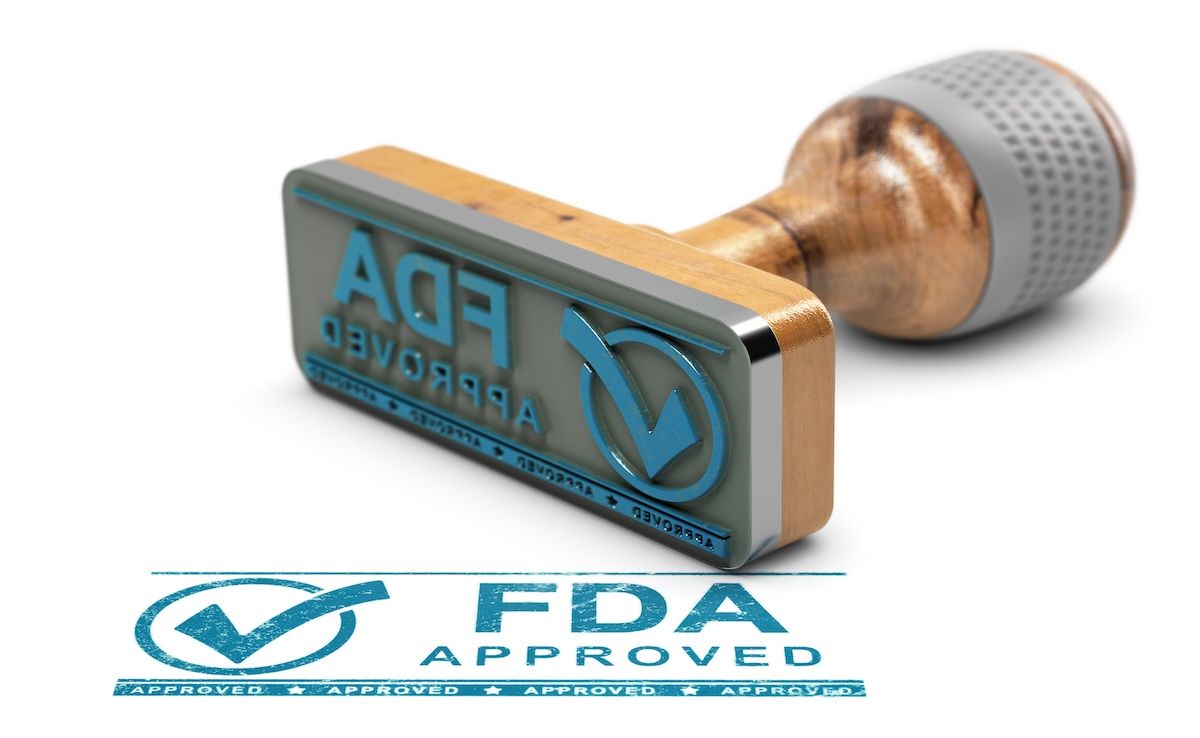- Center on Health Equity & Access
- Clinical
- Health Care Cost
- Health Care Delivery
- Insurance
- Policy
- Technology
- Value-Based Care
Mitomycin Intravesical Solution Gains FDA Approval for Recurrent Low-Grade NMIBC
The FDA approved mitomycin intravesical solution (Zusduri) for patients with recurrent low-grade intermediate risk non–muscle-invasive bladder cancer (NMIBC).
Mitomycin intravesical solution (Zusduri, UGN-102; UroGen) was FDA approved today for adult patients with recurrent low-grade, intermediate-risk non–muscle-invasive bladder cancer (NMIBC).1 The treatment is administered via urinary catheter as a once-weekly instillation for 6 weeks.
Data from the phase 3 single-arm ENVISION trial (NCT05243550), which enrolled 240 patients across 56 global sites, supported the agency's decision. Eligible patients had recurrent low-grade NMIBC following transurethral resection of bladder tumors (TURBT) and met at least 1 intermediate-risk criterion: multiple tumors, a solitary tumor (≥ 3 cm), or recurrence within 12 months.
Mitomycin intravesical solution was FDA approved for recurrent low-grade, intermediate-risk non–muscle-invasive bladder cancer.
image credit: Olivier Le Moal-stock.adobe.com

Out of the 223 patients evaluated, a complete response (CR)—defined as having no detectable bladder tumor based on cystoscopy and urine cytology—was observed in 78% of cases at the 3-month mark (95% CI, 72%-83%). Of those who achieved a response, 79% maintained it for at least 12 months.
In the phase 3 ATLAS study (NCT04688931), patients with low-grade intermediate-risk NMIBC were treated with either TURBT or UGN-102. At the 3-month evaluation, the CR rate was 64.8% for those receiving TURBT, whereas the CR rate for the UGN-102 group was slightly lower at 63.6%.2 Nevertheless, at the 12-month follow-up, 79.7% of patients in the UGN-102 group were disease-free, compared with only 67.7% in the TURBT group. Additionally, the HR for the duration of response significantly favored UGN-102, with a value of 0.46 (95% CI, 0.24–0.86), highlighting its beneficial impact in this treatment setting.
Despite promising results, the FDA’s Oncologic Drugs Advisory Committee (ODAC) narrowly voted 5 to 4 against a favorable risk/benefit profile in May 2025, citing the absence of randomized trial data.3
The FDA sought input from the committee on whether randomized trials should be required in the future to assess the effectiveness of therapies in the low-grade, intermediate-risk NMIBC setting during the ODAC meeting, according to OncLive®. They also discussed whether the overall risk/benefit profile of UGN-102 was favorable for this patient population in the recurrent setting.
“I voted no. Without a full randomized trial—I do want to commend and give kudos to the applicant for showing it's feasible to conduct a randomized trial—it is hard to determine the true benefit of [UGN-102],” Daniel Spratt, MD, of Case Comprehensive Cancer Center in Cleveland, Ohio, stated following the vote. “I understand from experts that the 3-month complete response [CR] end point is a standard in [the NMIBC] field, but for an indolent disease, that is an unbelievably short end point for me to demonstrate clinical benefit. There is very limited long-term follow-up.”
It was also reported that Isla Garraway, MD, PhD, of UCLA Health, expressed support for UGN-102 as a valuable option for select patients with significant comorbidities who may not be ideal candidates for surgery. In the article, she emphasized that delaying or avoiding surgery is beneficial for both patients and clinicians, particularly given limited clinical resources. Garraway noted that most cases of non–muscle-invasive bladder cancer are indolent and agreed with Mark W. Ball, MD, FACS, of the National Cancer Institute, that the reported toxicities are difficult to evaluate without a direct comparison to standard surgical treatment.
Recent updates presented at the American Society of Clinical Oncology 2025 Annual Meeting in Chicago indicated an increased CR rate of 79.6% (95% CI, 73.9%-84.5%), with an estimated duration of response (DOR) of 18 months at 80.6% (95% CI, 74.0%-85.7%).4
Of the remaining patients, 20% did not achieve CR, including residual disease, progression, or indeterminate/missing data. UGN-102 was delivered as 6 once-weekly outpatient instillations. The treatment was generally well tolerated, with treatment-emergent adverse events (AEs) occurring in 57% of patients, most commonly dysuria, hematuria, and urinary tract infection. Serious AEs were observed in 12%, including 2 related to treatment.
References
1. FDA approves mitomycin intravesical solution for recurrent low-grade intermediate-risk non-muscle invasive bladder cancer. FDA. June 12, 2025. Accessed June 12, 2025. https://www.fda.gov/drugs/resources-information-approved-drugs/fda-approves-mitomycin-intravesical-solution-recurrent-low-grade-intermediate-risk-non-muscle
2. Ryan C. FDA’s ODAC votes against risk/benefit profile of UGN-102 in recurrent, low-grade, intermediate-risk NMIBC. OncLive. May 21, 2025. Accessed June 12, 2025. https://www.onclive.com/view/fda-s-odac-votes-against-risk-benefit-profile-of-ugn-102-in-recurrent-low-grade-intermediate-risk-nmibc
3. Feldman J. FDA approves intravesical mitomycin in non–muscle-invasive bladder cancer. Targeted Oncology. June 12, 2025. Accessed June 12, 2025. https://www.targetedonc.com/view/fda-approves-intravesical-mitomycin-in-non-muscle-invasive-bladder-cancer
4. Mauro G. UGN-102 elicits nearly 80% CR rate in recurrent low-grade NMIBC. OncLive. June 9, 2025. Accessed June 12, 2025. https://www.onclive.com/view/ugn-102-elicits-nearly-80-cr-rate-in-recurrent-low-grade-nmibc
